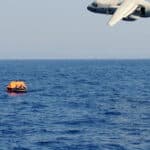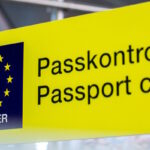In Italy, the air force is composed of command and control, combat, mobility, tactical and strategic transport, protection, operational support and projection, and logistical support assets. To introduce the topic, it is good to know that its so-called "air platforms" are divided into fixed-wing aircraft (airplanes) and rotary-wing aircraft (helicopters), remotely piloted aircraft (drones) and guided interceptors (missiles).
Now the Russian-Ukrainian conflict has made it obvious even to the uninitiated how, while in the past there was a close link between the aircraft type and its role in air operations, that principle has blurred as many aircraft have expanded their employment capability. One example is high-performance aircraft, the so-called fast jets, which were once designed for a combat role only, but are now also used for surveillance and enemy recognition. Another striking example is the use of drones, traditionally linked to the concept of surveillance and recognition, now also used in effective attack roles.
The type of air force employment, therefore, is no longer given by the platform used, but by the type of effects it is capable of producing. Here, then, is how essential it is to continually update the strategy, readiness and doctrine of air force employment.
Another concept confirmed by the war in Ukraine (already highlighted in Afghanistan, Iraq, Syria and Libya) are the continuous developments in sensors of satellite instruments, combined with the considerable increase in persistence in a given area. They make it possible to take full advantage of the altitude characteristic, which is critical to obtaining and maintaining the air situation in an operational theater.
To the classic characteristics of air power such as the aforementioned altitude, speed, and range, we must now also add precision of engagement, both in geographical and temporal terms. The all-weather capability of precision must enable air power - as well as sea power and land power - to produce decisive effects on operational outcomes in a given theater of operations. Acquisition of sensor technology and command and control systems must enable the location, tracking, and engagement of targets, including moving targets in medium-density urban areas, as well as the evaluation of performance and effects achieved.
Regarding, instead, mobility capability, air forces must compensate for their own limitations in movable payload, compared to surface assets, with the relative ease of reaching impervious areas, also characterized by the presence of hostile forces and in reduced time. The command and control of air capabilities rests on the principle of centralized control and decentralized execution, which can ensure agility, flexibility and rapid response. This requires having correct and timely data and information through suitable sensor networks and product analysis and dissemination capabilities as well as possessing or delegating authority to perform certain actions.
All of the aforementioned characteristics must allow for a flexible, versatile, highly projectable, high readiness, interoperable, and politically valuable air force. In common with maritime and land forces, air forces must pursue capabilities to train, exercise, and operate effectively together, with a view to conducting their assigned missions and tasks, within a joint force framework.
Senior Fellow of the Centro Studi Machiavelli. Admiral of division (res.), former commander of destroyers and frigates, he has held important diplomatic, financial, technical and strategic assignments for the Defence and Navy Chiefs of Staff, both at home and abroad, at sea and on land, pursuing the application of capabilities aimed at making the Italian defence and security policy effective.









Scrivi un commento